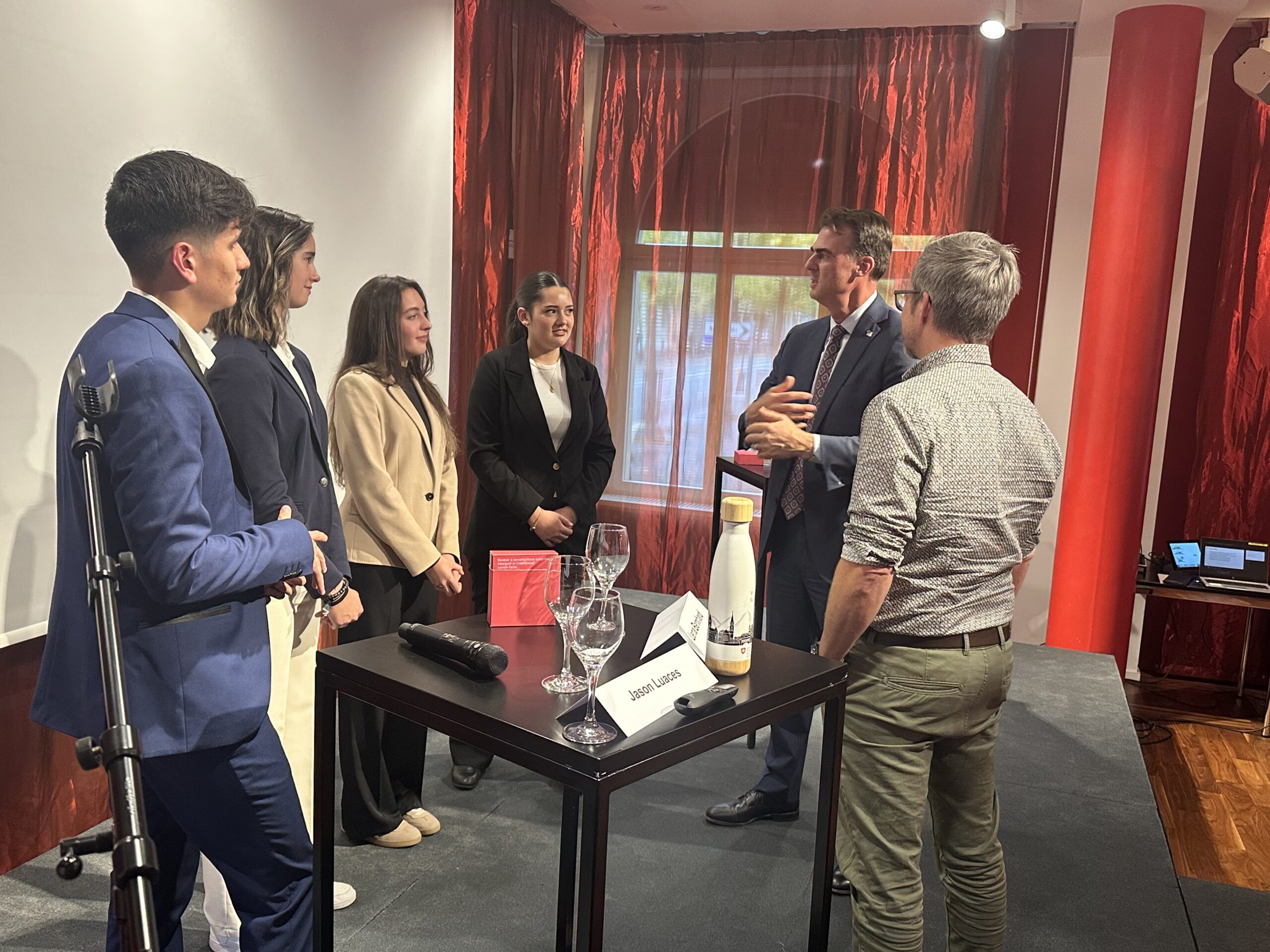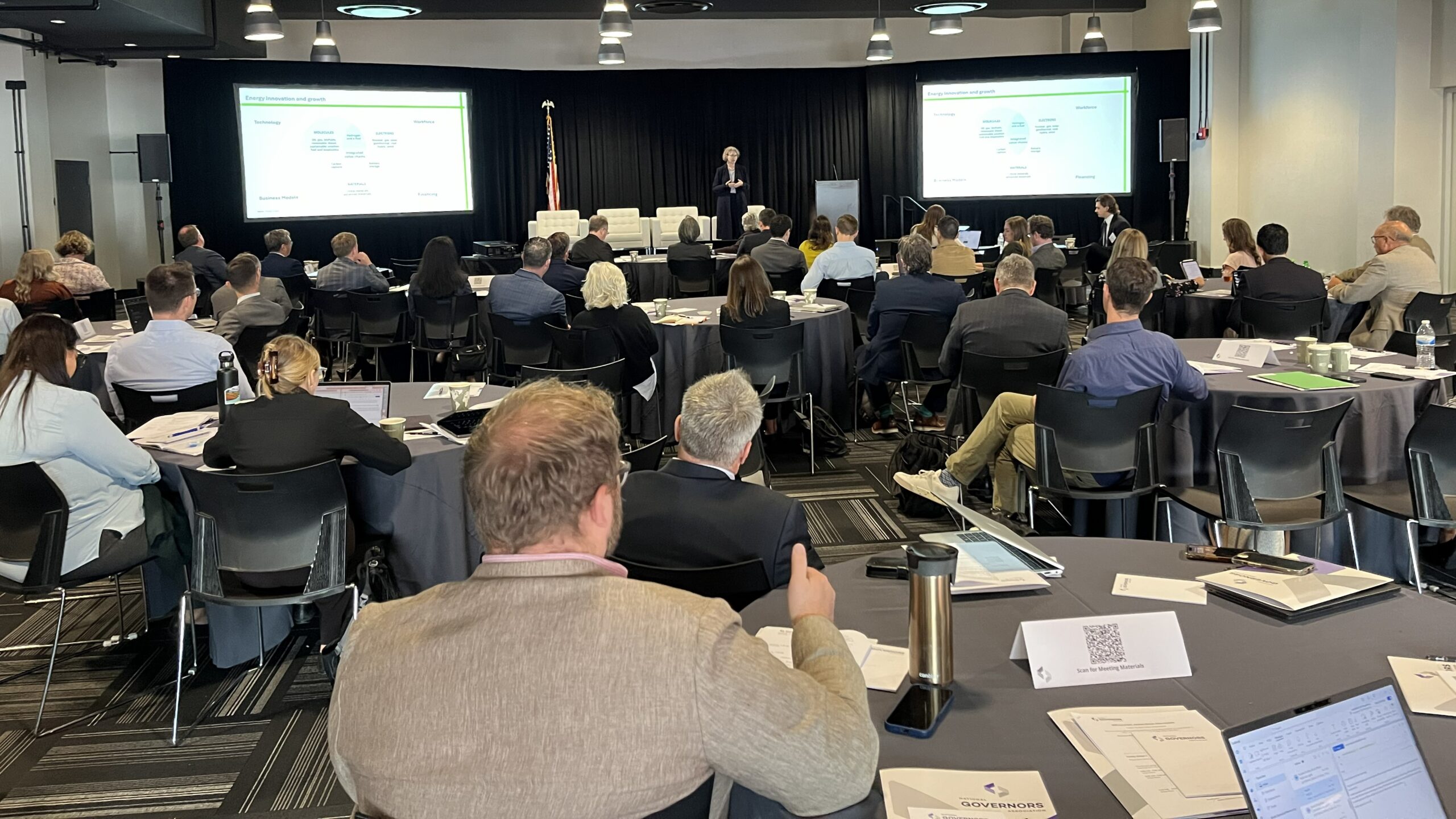The Let’s Get Ready! initiative examines a different facet of education at each convening, and the Las Vegas gathering focused on innovation.
There is broad consensus it is time to take advantage of technology to update education systems to meet students where they are and better prepare them for jobs of today and tomorrow.
NGA Chair Colorado Governor Jared Polis framed the conversation, stating, “Success relies on innovation: how educators can harness technology to make learning more engaging, preparing students for careers in so many fields that are growing.”
It’s not enough just to get back to a pre-pandemic normal. At the Colorado convening, Governors were briefed by representatives from the National Assessment of Education Progress (NAEP), who emphasized that the Nation’s Report Card shows education performance was declining even before the pandemic.

“Our education systems have been largely untouched since our first public schools were formed 200 years ago,” Wyoming Governor Mark Gordon commented. “In 2024, I just don’t think that cuts it anymore. I think that there are so many opportunities and so many new innovative ways that we can look at it… So much of the conversation around education really has gone about sort of prescriptively talking about: ‘How are we going to program our kids to do this or do that? How are we going to equip them with one thing or another?’ Instead of being able to meet them where they are, and find ways to engage them, and discipline that curiosity, so that it really becomes part of a skill, a lifelong learning.”
Governors were joined in Las Vegas by leaders on the cutting edge of education innovations designed to open opportunity to underserved populations:
- Reshma Saujani is the founder and CEO of Girls Who Code, which aims to close the gender gap in technology.
- Dr. Shanika Hope is a former elementary school teacher, principal and high school turnaround specialist who now serves as Director of Computer Science Impact and Outreach at Google.
- Martin Ritter is CEO of Stadler US, a Swiss train company that developed an apprenticeship program to train workers for successful careers in its Utah plant.

Saujani was inspired to found Girls Who Code after her experiences visiting schools while running for office: “I would go into New York City public schools and go into their robotics classes or their computer science classes. And I would just see lines and lines and lines of boys, not a girl in sight. And, quite frankly, that pissed me off because I kept thinking about my father’s voice. My father came here as a refugee, and he would always say to me, ‘You have three choices. You can be a doctor, a lawyer, or an engineer.’ Because he wanted me to get a job that was going to help me march up into the middle class. And that’s what these jobs in computer science did.”
Through summer programs, afterschool programs and other projects, Girls Who Code has served 670,000 since its founding in 2012. And its impact is evident on college campuses.
“I was just with the Dean of Stanford Engineering about a month ago, and she reminded me that in 2010, if you walked into probably any computer science class in the country, there probably would have been less than 18% of those that were girls that were majoring in computer science,” Saujani explained. “Today, you walk into any computer science class in the country, and it’s 40%. It’s 50%. Those are our students. And it’s simply a proof point of what social entrepreneurs in partnership with states can actually do to build the pipeline of talent.”

Hope also emphasized the importance of public-private partnerships, discussing how Governors can collaborate with industry to ensure students learn skills connected to job opportunities: “We have to be intentional about this idea of lifelong learning… We have to grow and adjust and adapt to the conditions of our environment…There has to be some effort at the government level to do some skills mapping. We have to map to the demand of your region the skills that your region needs not just today but three years out. Because, where you sit, you know what industry is coming into your state. So you can begin to give visibility and map what those skills are.”
Google has apprenticeship programs in eight countries, Hope noted, with micro-credentials tied to eight of the most in-demand jobs. Google’s work-based learning approach is shaped by a McKenzie study revealing that “the average skill has a five-year shelf life, and that shelf life is getting smaller.”
“The pace of the change is a substantial challenge,” Hope continued. “The pace at which industry moves versus the pace at which some of the institutions that have the responsibility of preparing our students for future jobs – we move at very different paces.” Hope cited metrics including lifelong earnings, productivity gains and social mobility to gauge the success of work-based education. “You can give people skills, but they need practice in the field of work with the skills. And that’s what creates and unlocks the earnings,” she stated.
Utah Governor Spencer Cox also emphasized the importance of work-based learning, citing Stadler’s success in importing the Swiss apprenticeship model to train workers for successful careers in its Utah plant: “We know the test scores. We see what’s happening out there. We all feel this kind of angst that’s boiling up where we want the best education system. I tell my team all the time: If you were to start from scratch and build an education system in our state, I promise it would look nothing like what we have right now. We don’t have the opportunity to deconstruct the airplane while it’s flying and start over. But we can make serious changes. And that’s happening right now…I think America does a whole bunch of things really, really good. [But] I’m jealous of the way that Europe does their education and work components combined. We spent 40 years kind of separating education from work, and that’s the wrong way to do it. And they’re helping us bring those two things back together at younger ages.”

Stadler CEO Martin Ritter explained the origins of his company’s apprenticeship programs: “We started the business to build trains… Beyond that we really found a common ground in Utah to go beyond building trains to try to adapt that education system that’s beautifully working in Switzerland to more than just manufacturing.”
Stadler’s programs benefit the company by enhancing recruitment, retention and loyalty, and they benefit workers by training them in highly valued skills. But Ritter was quick to note that the training can open a number of pathways – not just in Stadler’s field: “Students who graduated with us are now going to college to get an engineering degree. Some are first generation high school graduates, and certainly almost all of them are first generation college graduates. I went through an apprenticeship program actually in agriculture and ranching; and I’m building trains now. So it’s really a start of a career. It doesn’t matter what decision you make at 16 years old; you can still go somewhere entirely different in your career because of the stackability.”
Governor Polis summed up the value of work-based learning no matter which path students choose after high school: “I was visiting a school in Thornton last week, Bollman Tech, where students in their junior and senior year are preparing for careers in cybersecurity… When students graduate high school, many of them are able to get jobs at $80,000 a year or more. Some join the military, some go to college, some go right to the private sector… These opportunities are not mutually exclusive with higher education, but for some they’re a better path. For those who do want to go into higher ed, they have a leg up. Students that are graduating high school with dual and concurrent enrollment credits might only need another two or three years to get a bachelor’s degree as opposed to four years. Many students are graduating high school concurrently with an associate’s degree, or if they’re not, they might only need a semester, or at most a year, to get there rather than two. So these kind of opportunities save the students and their families time and money and help fill workforce needs of the private sector sooner rather than later.”
Watch the full session below and bookmark the Let’s Get Ready! homepage for future updates on the Initiative.












